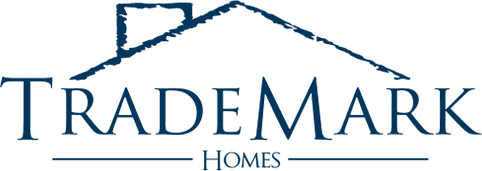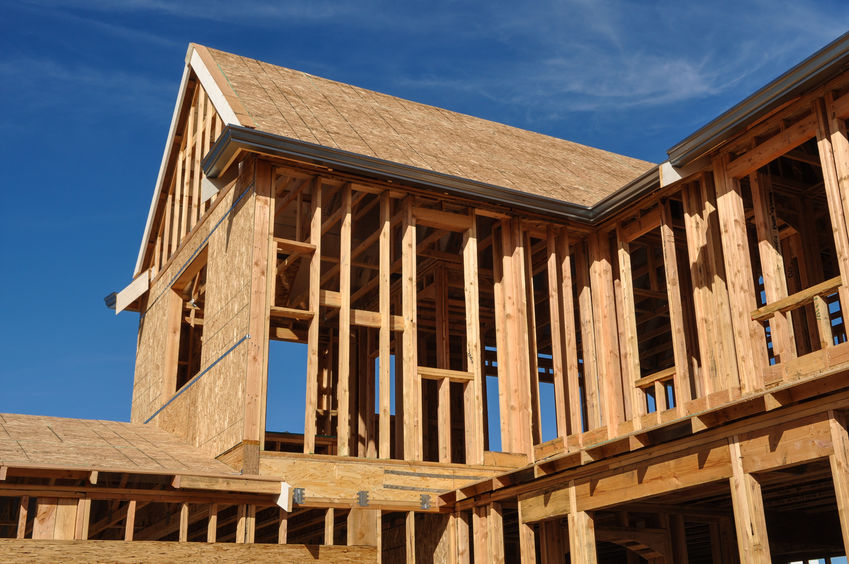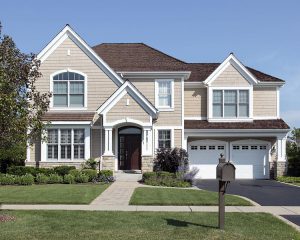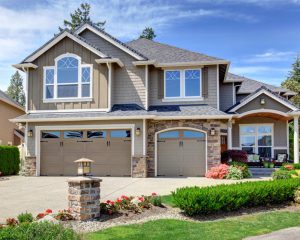What is the Estimated Cost of Building a House?
If you’re looking for a new home, or your first home, the options are plentiful. At any given time, there’s always an abundance of houses available to buy. The problem is that you’ll need to find a house that satisfies your needs and what you’re looking for, which can be tedious. If you’ve owned a home before and are looking to find your dream home, you’re going to be picky about the details. Renovations can add-up and a lot of people who envision their perfect home will eventually consider building one from the ground up. As the average price of a family home continues to rise, it might even be more economical to build your own house.
One thing to keep in mind is that while you might crunch some numbers and find that it’s cheaper to build your own home, you need to take in a lot of considerations before you can get an accurate estimate. Everyone has different taste, wants, and needs in a home and your specifics might make building a house far more expensive than buying one on the market. To help you get a better understanding of your situation, it’s not only important to ask yourself, “How much does it cost to build a house?” it’s also important to consider how much it will cost to build your house—one that mirrors your vision.
Consider Where You Want to Live
Costs vary by state and region, so location is the first thing you’ll want to think about. This is largest variable and is responsible for the most drastic price differences—price per square foot can be up to $60 more expensive in certain regions. This would equate to a $150,000 price difference if you were looking to build a home that was 2,500 square foot. Generally speaking, the median price per square foot is the highest in the Northeast and West and lower in the Midwest and South regions of the country.
When asking yourself, “how much does it cost to build a house?” the location is going to be the main determinant. If you’re thinking about a few different areas and want to estimate a cost comparison, try using this calculator as a building cost estimator. Just enter your zip code and you can compare the national average, price ranges, and the estimated cost by region.
Think About Size
The next step in determining how much it will cost to build your home is figuring out how big, or small, you want it to be. Some people love the coziness of smaller homes, which is why we’ve seen such an influx in “tiny homes” in the last decade. Others want room to have a family, live, and grow. Remember, the size of your lot isn’t going to be the size of your house. The lot will also encompass your driveway, lawn, and any patio extensions or outdoor additions to your home.
You’re going to pay per square foot so the size of your home has a direct correlation with cost. In the South, the least expensive region to build a home, you can expect to pay an average $100 per square foot. In the Midwest, the price is only slightly higher at $109 per square foot. The Western region costs an average of $130 per square foot while the Northeast is the most expensive at about $160 per square foot. It’s important to note that these are averages and some areas will be substantially higher than their location’s average. For example, if you were to build a home in the San Francisco area, you’ll likely pay close to $400 per square foot or more. Most new homes that are built these days range from 2,500 to 3,000 square foot, so you can use that as an estimating tool.
Weigh Your Options
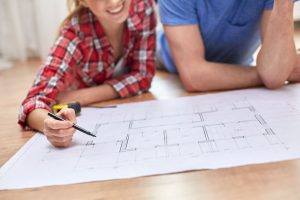 Now that you’ve looked at both region and size, it’s time to really weight your options. Do some research and look at houses in the area that are close to your desired size. Work with a trusted agent to compare the prices of a few different houses that are move-in ready. If you find something that could transform into your dream house with a few renovations, sit down and make the necessary calculations. At this point, some people may find that it’s more cost appropriate to buy the developed home and make a few minor changes to transform it into their dream home.
Now that you’ve looked at both region and size, it’s time to really weight your options. Do some research and look at houses in the area that are close to your desired size. Work with a trusted agent to compare the prices of a few different houses that are move-in ready. If you find something that could transform into your dream house with a few renovations, sit down and make the necessary calculations. At this point, some people may find that it’s more cost appropriate to buy the developed home and make a few minor changes to transform it into their dream home.
More often, if you really want to move into your dream home, you’re going to have to start from scratch. This will allow you to completely customize your home in the most cost-effective way. Before getting started, you’ll need to buy the land. This might be more difficult, as there are fewer empty lots than there are homes for sale, but it’s worth it. Take your time finding the perfect plot and make sure that you happy with the location before finalizing the sale. Remember that finding a lot in the heart of a city might not be sufficient for your desired home size and if you aren’t willing to make a compromise on city life, the land is going to be much more expensive than in a rural setting.
This is an important decision, so take the time to really weigh your options. Finding a rural plot of land in close proximity to your favorite city will help save you thousands of dollars and give you a much larger plot to work with. If you’re struggling with this decision, talk to TradeMark Homes to learn more about the differences between building a home in the city and building a home in the suburbs or more rural areas.
Additionally, you’ll have an option to create a custom floor plan or choose a floor plan that’s already been developed. Designing a custom floor plan will require an architect and can cost upwards of $5,000—just for the design. If you choose a developed floorplan, you could save $3,000 or more.
Plan for Labor Costs
In addition to the price for the plot of land, appliances, and materials, you’ll have to set a budget for labor costs to build a house. Unless you’re taking this on as the ultimate DIY project—which is not recommended unless you have the professional experience and understand permit requirements—you’re going to need to hire outside help.
Labor costs make up a significant portion of the cost to build a house, so plan accordingly. Depending on the size and complexity of your home, labor can end up making up to 60% of your total costs. Different laborers are paid in different ways. Some are paid for the job in total, others are paid hourly, and others are paid per square foot. Make sure you talk to your laborers to determine their prices before moving forward with your job so that you’re prepared for the final costs. When building a house, you’ll also have to pay for all of the materials that your laborers use. Consider the price of lumber, concrete, drywall, flooring, siding, insulation, and roofing when trying to make an estimate of how much it will cost to build your home.
Choose Your Interior and Exterior Finishes
Now the fun begins. Choosing your interior and exterior finishes will bring you one step closer to your dream home. The interior finishes include picking out cabinets, doors, countertops, flooring, drywall, painting, lighting fixtures, appliances, and any fireplace costs. For your exterior finishes, you’ll consider your roofing options, window costs, and any painting that accompanies your home. This is where the price starts to increase with your personal taste. Some people prefer top-of-the-line, best-of-the-best fixtures and others are okay with getting something mid-range. If you have expensive taste, be prepared to spend a significantly larger amount of money on building your home. If your budget doesn’t allow for expensive taste, opt for mid-range finishes that you can easily renovate later on.
To Buy or To Build?
After you take into consideration all of the details above, it’s probably a little bit cheaper to buy a home that’s already standing. However, if you’re ready to live in your dream house, you’re unlikely to find anything already standing. TradeMark Homes is here to work with you regardless of what you decide. If you’re ready to build your dream house, TradeMark Homes will turn your vision into a reality.
Trade Mark Homes is committed to building your dream home using an enjoyable and stress-free process. Our team will work with you from planning through construction to help you build the perfect home. We also offer financial flexibility so you don’t have to sacrifice any features in your new home. Our flexible home leasing options means you can move into your beautiful home on your terms, not those set by commercial banks or loan sharks.
We understand that the first step in building your new home begins with you. Fill out an inquiry form or call us today at 479-267-9900 to schedule a consultation, discuss your vision, and go over your budget.
